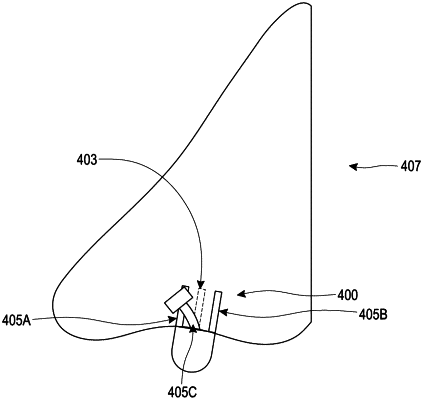| CPC A61B 5/6819 (2013.01) [A61B 5/0015 (2013.01); A61B 5/02438 (2013.01); A61B 5/14552 (2013.01); A61B 5/0205 (2013.01)] | 20 Claims |

|
1. A noninvasive physiological monitoring device configured to be secured to a nose of a user and measure/monitor one or more physiological parameters, the noninvasive physiological monitoring device comprising:
a first prong configured to be positioned on an inner side of the user's nose;
a second prong configured to be positioned on an outer side of the user's nose;
a coupling portion connected to the first and second prongs, wherein the first and second prongs extend outward from the coupling portion and are spaced laterally from one another, said coupling portion configured to bias the first and second prongs toward one another such that the first prong applies pressure to a first portion of the user's nose and the second prong applies pressure to a second portion of the user's nose;
an emitter configured to emit light of one or more wavelengths toward tissue of the user's nose, wherein the emitter is connected to the coupling portion via a flexible post, said flexible post configured to position said emitter adjacent a third portion of the user's nose that is spaced from both of the first and second portions of the user's nose;
a detector configured to detect at least a portion of the emitted light after the light is attenuated by the tissue, wherein the detector is further configured to output at least one signal responsive to the detected light, wherein the detector is connected to a portion of one of the first and second prongs; and
a processor configured to receive said at least one signal outputted by the detector and determine one or more physiological parameters of the user based on said received at least one signal.
|